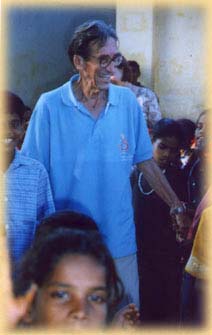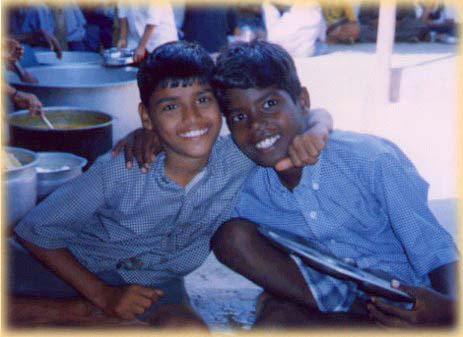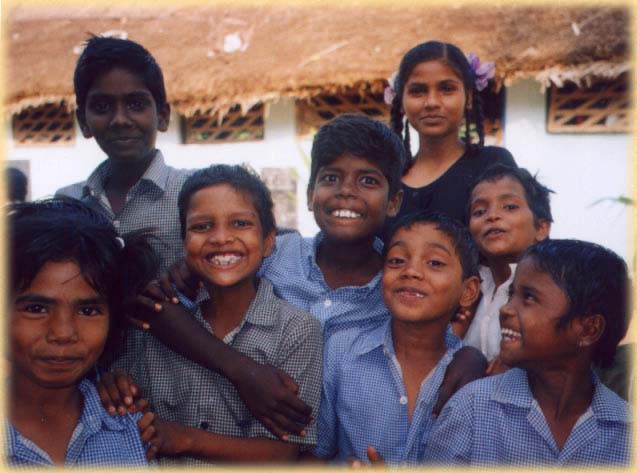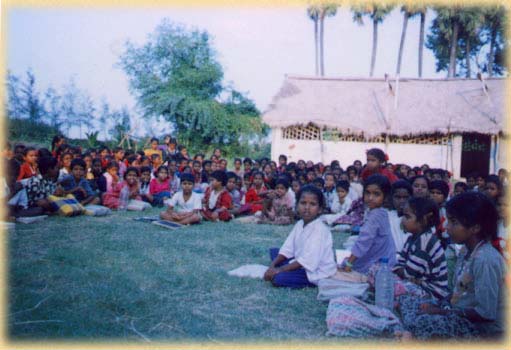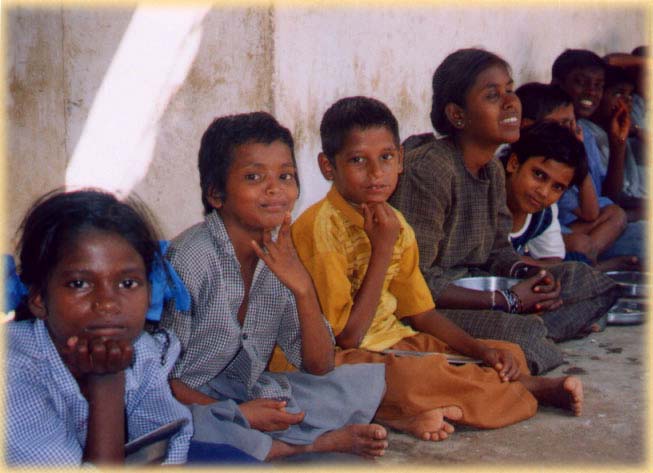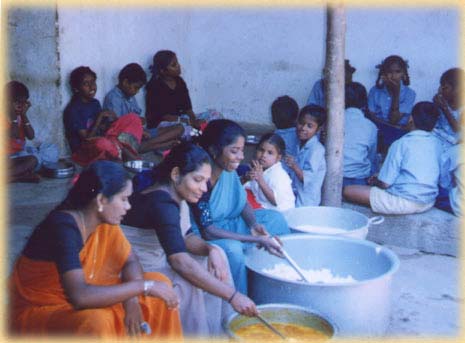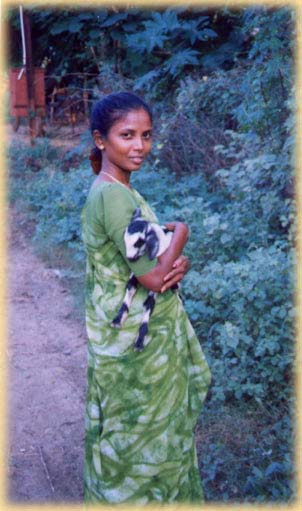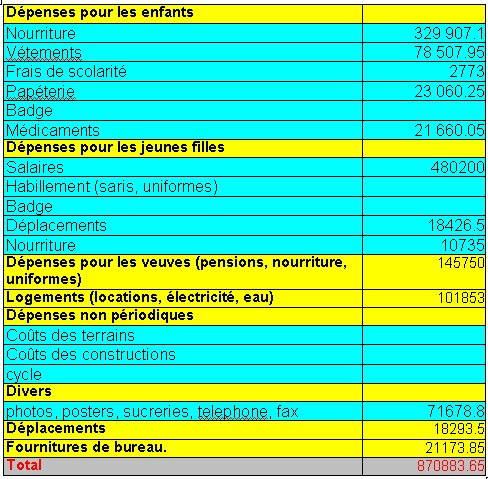
 |
|
* How support forgotten
children
" It is a chain of children or groups of children, all across Tamil organised with minimum structures and expanses. Rather than an organization, it is a movement of children that he manages to hold with his only presence and great love of children. Some might find it very disrupted, it certainly is not a traditional or conformist approach… It is diametrically opposed to the "traditional" orphanages formula, which may become a desert of love where children can hardly blossom… . Of course, there might be disorder and frailty, the disorder and frailty of life…." (Father Ceyrac)
I. THE PROJECT
1) At the beginning, in 1993… The Father Ceyrac among children from Singanur.
Smile
"We had only two priorities. The first one was to give a child what he needs most and most of our children never experienced: the feeling of being loved. The other priority was education. India has a huge number of children labourers: 20 millions, according to official sources; the actual number varies from 50 to 100 million children labourers out of 500 million children in India. This is a very difficult problem to solve. Suppressing such habits immediately is impossible: consequences would be tragic for the poor families, and more particularly widows. We propose an intermediate solution: let the child go to school in the morning, and work in the afternoon, or vice versa. But we reject any hard work, be it in a factory or anywhere else. This is not an easy way out, but we really insist on the fact that all our children, without any exception, should enrol in a communal or Christian school. In addition to this regular schooling, there are one or two supplementary classes every evening thanks to the help provided by young girls to the children. These repetitions build the unity of our movement." (*) (*) Pierre Ceyrac, Pèlerins des frontières ( p 111-116), Editions du CERF
2) The project today
3) The children Children from Siganur
The Opened Hands movement helps all the abandoned
children and pupils of poor families regardless of the caste, colour,
religion, or language. Children come mostly on their own will after
having heard of the movement. Time for lunch
Type of aid provided according to the children's situation:
1) Women's network The widows and unmarried girls are in charge of the children's education and supervision. Indeed, the widows' situation in India is often
very difficult. Those who remain at home to take care of the children
don't have any money to feed them; those who choose to work cannot
take care of their children. This system saves the children and
helps the widows to regain their maternal dignity. Lunch
Two women are in charge of each group of five villages. Their work is to check the children's arrivals and departures, their school levels, and to coordinate work in the villages they are in charge of. " This way, not only do these two infrastructures save women but also contribute very efficiently to woman's liberation!"
Young girls' functions and salaries:
2) The spirit of Ambukarangal. "This spirit leads to the
children's development, widows' rehabilitation and the training
of young girls who will become real animators or even catalyst of
change in their village. It is priceless for a child to perceive
a feeling of love and be lucky enough to be fed or be able to study.
It is so important for a woman left alone to to be given the opportunity
to breed decently her children and to love and protect other. It
is such an accomplishment to feel recognised as a person able not
only to live independantly but also to take care of many children
and bring life to a village for a young woman whose studies have
been shortened by lack of money and whose familial situation will
not make another mariage possible. (Valuation and support mission to the Indian association Ambukarangal, Father Ceyrac Children's Trust, 1997 Mission Report) III. EXPENDITURE FOR THE FIRST SEMESTER 2000 (JANUARY-MAY 2000).
§Non certified teachers only
earn 250 RS a month and we dont have the means to increase this
salary. 1) Material needs: § A more performing computer
system. 2) Human needs § A computer specialist, in order to improve the young girls'
knowledge in this domain. 3)Financial needs § For the children's medical care § Sale of mancraftship |
